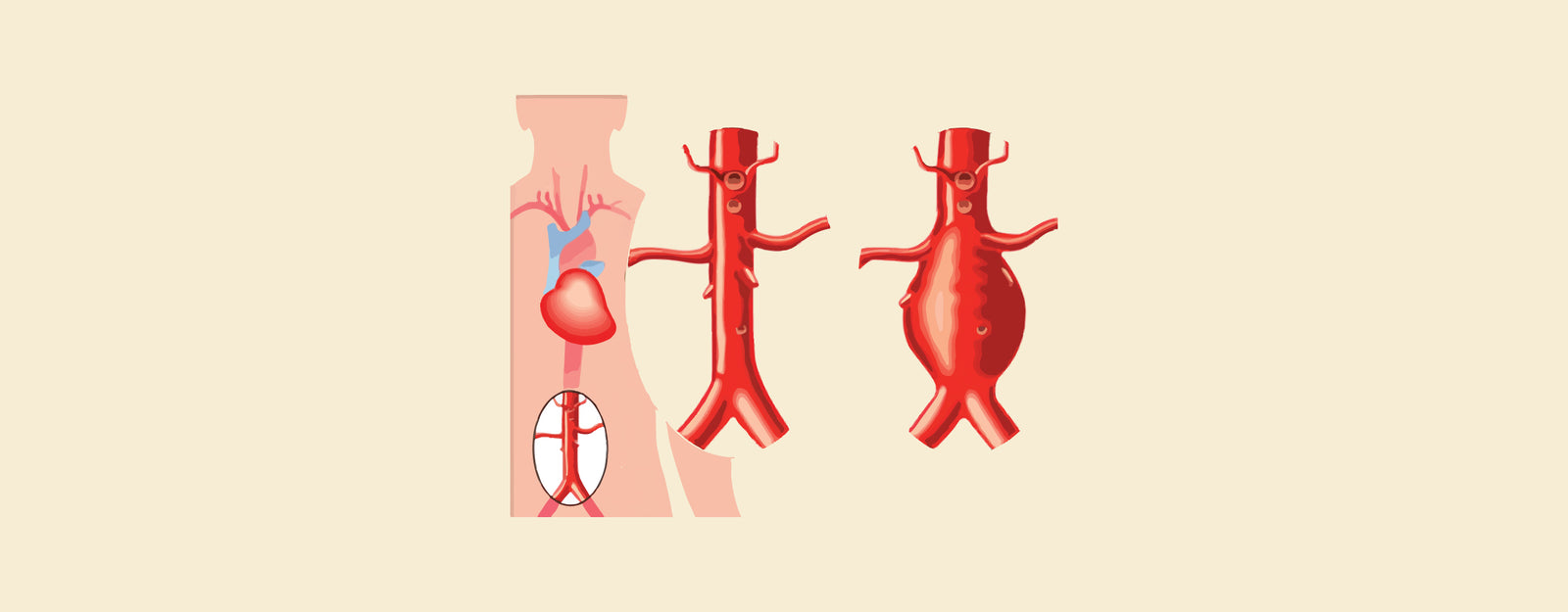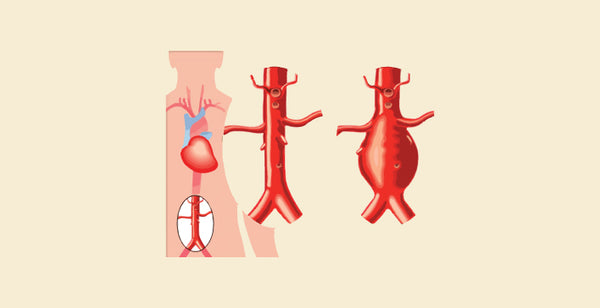Difference Between Aneurysm and Thrombosis: Aneurysm and Thrombosis are two separate medical disorders that affect blood arteries. An Aneurysm is a localized bulging of the blood vessel wall that can be caused by several reasons, including genetic predisposition, high blood pressure, atherosclerosis, trauma, or infection. Aneurysms may not cause symptoms until they rupture, resulting in potentially fatal internal bleeding, with symptoms including severe headaches, pain, and neurological impairments depending on location. In contrast, Thrombosis is the creation of a blood clot within a blood vessel, restricting blood flow. It is most commonly caused by anomalies in blood vessels. Thrombosis symptoms vary depending on the location and degree of the clot and might include swelling, discomfort, redness, warmth, or even no symptoms at all until issues emerge.
Aneurysm
- A localized, abnormal dilatation or bulge of a blood vessel wall.
- Genetic predisposition, high blood pressure, atherosclerosis, trauma, and infection are all possible causes.
- Aneurysms can arise in a variety of locations throughout the body, including the brain (cerebral aneurysm) and the aorta.
- Symptoms may not appear until the rupture occurs, which can result in potentially fatal internal bleeding.
Thrombosis
- A blood clot (thrombus) forms within a blood vessel and obstructs blood flow.
- Can be caused by anomalies in blood vessels or clotting factors.
- Deep vein thrombosis in the legs, pulmonary embolism, and heart attacks are all common locales.
- Signs vary depending on the location and size of the clot, but they can include swelling, discomfort, redness, warmth, or no signs at all until issues occur.
Difference between Aneurysm and Thrombosis
An Aneurysm is an abnormal bulging of the blood vessel wall that is usually asymptomatic until it ruptures, whereas Thrombosis is the creation of a blood clot within a vessel, which can lead to consequences such as pulmonary embolism or stroke. The table below provides differences between Aneurysm and Thrombosis
|
Feature |
Aneurysm |
Thrombosis |
|
Definition |
Localized, abnormal dilation of blood vessel |
Formation of blood clot within blood vessel |
|
Causes |
Genetic predisposition, hypertension, etc. |
Abnormalities in blood vessels or clotting factors |
|
Location |
Can occur in various arteries or veins |
Commonly in deep veins (DVT), pulmonary arteries, coronary arteries |
|
Symptoms |
Often asymptomatic until rupture |
Variable depending on location and extent of clot, including pain, swelling, redness, warmth |
|
Complications |
Rupture leading to internal bleeding, neurological deficits |
Pulmonary embolism, stroke, heart attack |
|
Treatment |
Surgical repair, endovascular therapy |
Anticoagulant therapy, thrombolytic therapy, surgery if necessary |
Browse The Best Scrubs Collection!
What is Aneurysm?
An Aneurysm is an abnormal bulge or ballooning of a weak spot in the wall of a blood vessel, usually an artery. It can arise in a variety of locations throughout the body, including the brain (cerebral aneurysm), the aorta (aortic aneurysm), and other arteries. Genetic predisposition, high blood pressure, atherosclerosis, trauma, or infection can all contribute to the development of aneurysms. They may not exhibit symptoms until they rupture, which can result in serious internal bleeding and potentially fatal complications.
Features of Aneurysm
- Risk Factors: Smoking, high blood pressure, atherosclerosis, some genetic disorders, and a family history of Aneurysms are risk factors for having an Aneurysm.
- Complications: The most dangerous complication of an Aneurysm is rupture, which can lead to fatal hemorrhage. Other problems may include compression of surrounding structures, thrombosis inside the Aneurysm, or embolization of clot fragments to other regions of the body.
- Diagnosis and Treatment: Imaging tests including CT, MRI, ultrasound, and angiography are frequently used to make the diagnosis. Surgical repair, endovascular methods (such as stent implantation or coiling), or cautious waiting are all possible treatments, depending on the size, location, and risk of rupture.
- Asymptomatic or Symptomatic: In many situations, aneurysms do not show symptoms until they rupture, resulting in serious problems such as internal hemorrhage. However, depending on their size and location, some Aneurysms might cause symptoms such as pain, palpable mass, or neurological deficiency.
Causes of Aneurysm
- Atherosclerosis causes arterial wall weakness.
- Genetic factors, such as Marfan syndrome, raise risk.
- Hypertension weakens the blood vessel walls.
- Trauma can result in vascular damage.
- Infections, such as syphilis, cause inflammation.
- Smoking hastens atherosclerosis progression.
- Age and gender influence aneurysm prevalence.
Symptoms of Aneurysm
- Sudden, Severe Headache: Frequently characterized as the worst headache ever, also known as a "thunderclap" headache.
- Pain or Stiffness in the Neck: Especially if the aneurysm is in an artery near the brain's surface.
- Blurred or Double Vision: This can happen if an aneurysm exerts pressure on the nerves that govern eye movement or disrupts blood flow to the eyes.
- Dilated Pupils: One pupil may be larger than the other or might not respond to light.
- Nausea and Vomiting: Especially if combined with other symptoms such as headache or neck stiffness.
What is Thrombosis?
Thrombosis is the formation of a blood clot within a blood vessel, which obstructs blood flow and may result in consequences such as pulmonary embolism or stroke. It can be caused by anomalies in blood arteries or clotting factors, and the symptoms vary based on the location and size of the clot.
Features of Thrombosis
- Formation of Blood Clots: Thrombosis occurs when blood clots form in the circulatory system. These clots can be made up of platelets, fibrin, and other blood components.
- Location: Veins and arteries throughout the body can become thrombosed. Arterial thrombosis usually occurs in arteries that deliver oxygen-rich blood to tissues, whereas Venous Thrombosis happens in veins that return blood to the heart.
- Risk Factors: Age, obesity, smoking, sedentary lifestyle, family history of thrombosis, certain medical conditions (such as diabetes, cancer, and autoimmune diseases), and medications (like hormone replacement therapy and hormonal contraceptives) can all raise the risk of thrombosis.
- Complications: Left untreated, thrombosis can cause tissue damage, organ dysfunction, stroke, heart attack, and even death.
- Diagnosis: The diagnosis of Thrombosis is frequently made by combining several tests, including a physical examination, an assessment of medical history, imaging tests (like an MRI, CT scan, or ultrasound), and blood tests (like a D-dimer assay).
Causes of Thrombosis
- Reduced blood flow raises the chance of clotting.
- Endothelial damage causes clot formation.
- Genetic factors increase the risk of thrombosis.
- Cancer and chemotherapy increase the risk of clots.
- Hormonal variables influence clotting.
- Smoking harms blood vessels.
Symptoms of Thrombosis
- Swelling: Decreased blood flow and fluid accumulation may cause the affected area to enlarge.
- Pain or Tenderness: The affected area may experience pain or tenderness, which is typically described as a dull ache or throbbing sensation.
- Redness or Discoloration: The skin around the affected area may be red, purple, or discolored.
- Warmth: Inflammation and increased blood flow may cause the affected area to feel warmer than surrounding tissue.
- Vein Enlargement or Visible Veins: Deep vein thrombosis (DVT) can cause veins near the skin's surface to seem larger or more visible.
- Leg Pain or Swelling: DVT frequently affects the legs, causing pain, swelling, and sensitivity, especially in the calf muscle.
Shop Best Lab Coats From Here!
Similarities between Aneurysm and Thrombosis
- Both affect the cardiovascular system and can result in major health issues.
- Both can occur in arteries, disrupting blood flow and potentially causing tissue injury or organ malfunction.
- If not recognized and treated as soon as possible, both illnesses can be fatal.
- Depending on where and how severe they are, both can cause pain, swelling, and alterations in sensation or function.
- Imaging studies, such as an ultrasound, CT scan, or MRI, may be required to diagnose both Aneurysms and Thrombosis.
To summarize, while both Aneurysms and Thrombosis involve the circulatory system and can result in major health issues, they are distinct disorders with different underlying causes, pathophysiology, symptoms, diagnostic techniques, and treatment strategies. Aneurysms are caused by weakening artery walls, which generate bulging sacs that can burst, whereas Thrombosis is the formation of blood clots within blood vessels, impeding blood flow. Recognizing the distinctions between these illnesses is critical for earlier diagnosis and care, which ultimately improves patient outcomes and reduces the risk of complications.
Order the Best Jogger Scrub From Here!
| Check out More Articles | |
| Difference Between Tendon and Ligament | |
| Difference Between Seizure and Epilepsy | |
| Difference Between Hypothyroidism and Hyperthyroidism | |















